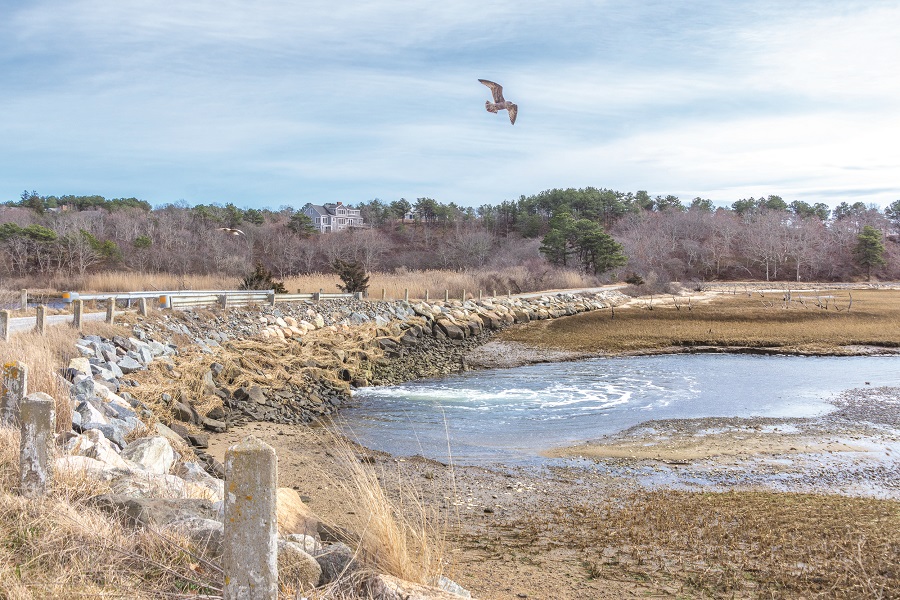TRURO — The select board voted on March 28 to replace the damaged culvert currently restricting tidal flow into Mill Pond with an 8-by-8-foot box culvert.

Dept. of Public Works Director Jarrod Cabral and the town’s water resources consultant, Scott Horsley, had recommended a different course: a 95-foot-wide breach in the roadway that would produce a 10-foot-wide opening at sea level and greater tidal mixing in the pond.
Only select board chair Kristen Reed was willing to support that option, however. Her four colleagues — vice chair Bob Weinstein, clerk John Dundas, and members Stephanie Rein and Sue Areson — preferred to leave the road open to vehicles and install a culvert instead.
The town’s engineering contractors, the Woods Hole Group and Fuss & O’Neill, had presented four choices, two of which involved culverts that would leave the road open to traffic; the other two included breaches that would close the road to vehicles.
Cabral said that all four options would be 75-percent funded by the U.S. Dept. of Agriculture. The final 25 percent would be the town’s responsibility, he said, and could be covered by a grant from the state office of Coastal Zone Management.
“The channel breach would be more easily funded in terms of having a more positive impact on the environment,” Cabral said, “but I’m not saying it’s a hard ‘no’ for a culvert.”
The breach plans were met with vocal and extensive pushback from Truro residents, who expressed concerns about safety and traffic. If Mill Pond Road were closed, vehicle traffic would have to be diverted to Old County and Depot roads. Cynthia Conroy put an article on the warrant for Truro’s upcoming town meeting asking the select board not to close the road, and an online petition garnered over 1,400 signatures for a similar request.
Weinstein said that safety was the driving force in his support for a culvert.
“Two access points are better than one,” Weinstein said, referring to statements made by Fire Chief Tim Collins and Police Chief Jamie Calise.
Both chiefs had supported multiple access roads in principle while also writing separately in memos that they did not “foresee any public safety concerns” stemming from a closed road.
Weinstein’s second priority was cost, he said. Multiple members of the select board and the public noted that the cost projections for the breach options did not include other related expenses such as a pedestrian bridge over the breach and changes to other intersections. With those expenses added to the breach estimate, “it’s about equal to what an 8-by-8 box culvert would cost,” Weinstein said.
Cabral and the consultants had mentioned that a culvert option might later mean the roadway would need to be raised to accommodate sea-level rise.
“I am not in favor of raising the road,” said Areson, citing the six-foot impact on either side of the road and the costs such an effort would entail. “I fully recognize that Mill Pond Road is a low-lying road, and it might be underwater sometimes. When it’s underwater, we don’t use it.”
In the end, Reed joined the other board members in voting for Weinstein’s motion for the 8-foot culvert option.
“While my heart of hearts wants bold leadership around the breach,” Reed said, “I do think that public opinion matters.”
